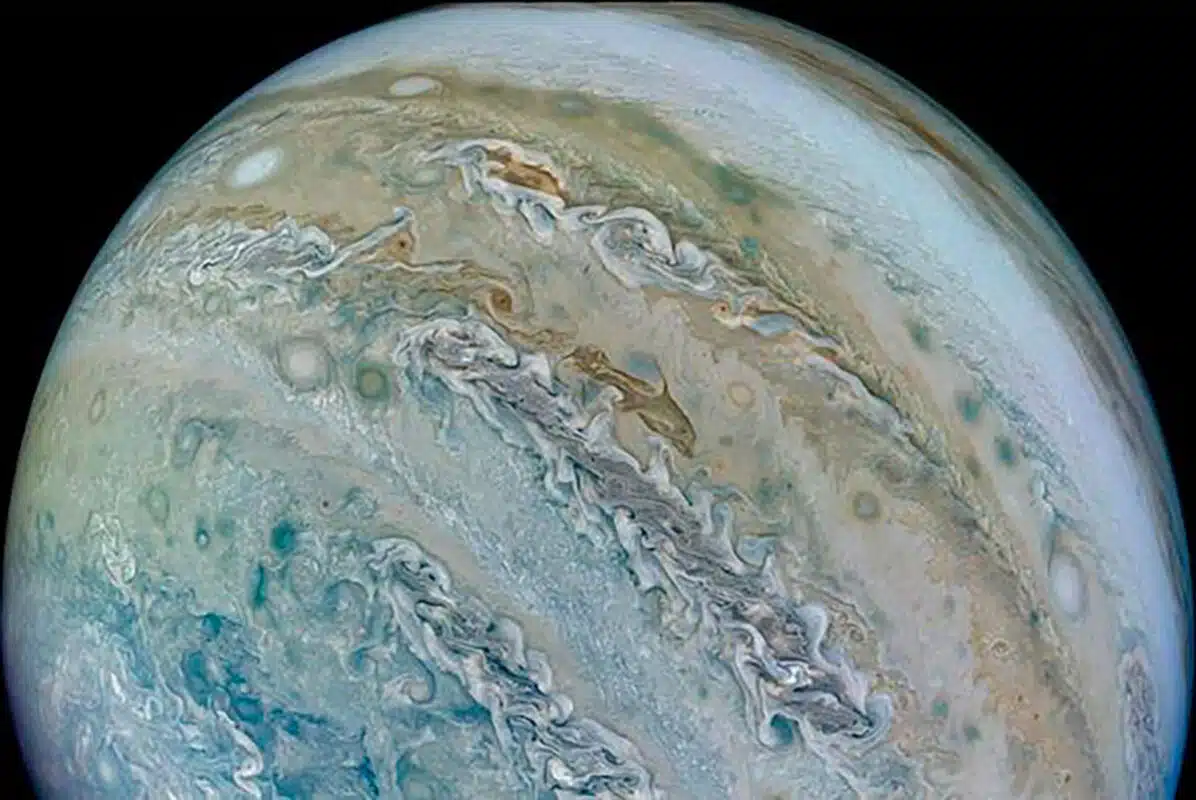NASA’s Juno spacecraft captures image of a dolphin on Jupiter’s surface
The NASA Juno spacecraft has once again amazed the world, capturing an extraordinary image of Jupiter’s atmosphere. This time, a dolphin-shaped cloud formation was spotted swimming along the gas giant’s southern temperate belt, adding a unique blend of scientific intrigue and artistic wonder to the mission’s growing portfolio of discoveries.


Juno: A Mission to Reveal Jupiter’s Hidden Layers
Launched in 2011, the Juno spacecraft entered Jupiter’s orbit in 2016 with a mission to unravel the mysteries of the solar system’s largest planet. Unlike terrestrial planets, Jupiter’s dense atmosphere hides its inner secrets. Juno’s instruments were designed to peer beneath its cloud layers, revealing the planet’s composition, magnetic field, and weather dynamics. These insights help scientists better understand the formation of gas giants and the early solar system.
Juno’s observations have already reshaped our understanding of Jupiter, showcasing its dynamic atmosphere, intense magnetosphere, and moons such as Europa and Ganymede. The spacecraft’s high-resolution images have also captivated the public, resembling abstract paintings with swirls of pastel colors and vibrant storms.
The Dolphin Cloud: Science Meets Art
Among the many photographs taken by Juno, the dolphin-shaped cloud stands out. The image captures a fleeting moment where storm formations in Jupiter’s southern temperate region created a pattern resembling a dolphin in motion. This phenomenon is a classic example of pareidolia, where the human brain interprets random shapes as familiar objects. Such images are not uncommon on Earth, often observed in terrestrial cloud formations.
Jupiter’s rapidly changing atmosphere plays a key role in such occurrences. With winds reaching speeds of up to 620 kilometers per hour (385 miles per hour), the cloud patterns are in constant flux. Scientists speculate that this dolphin-like structure likely vanished mere seconds after Juno’s camera snapped the image.
Jupiter’s Dynamic Atmosphere
Jupiter’s atmosphere is a turbulent blend of hydrogen, helium, and trace elements like methane and ammonia. These components fuel massive storms, including the iconic Great Red Spot, a storm large enough to engulf Earth. The dolphin-shaped cloud, while seemingly whimsical, reflects the planet’s violent weather systems that produce breathtaking visuals.
Jupiter’s vast size—142,984 kilometers (88,846 miles) in diameter—further amplifies these effects. The planet’s immense gravity and rotating magnetic field create conditions unlike any other in the solar system, making it a natural laboratory for studying atmospheric physics on a grand scale.
Pareidolia: A Window into Human Perception
The dolphin cloud reminds us how human perception plays a role in interpreting celestial phenomena. While the structure is scientifically fascinating, it also stirs imagination and wonder, blending the realms of art and science. This duality has been a hallmark of Juno’s mission, offering a deeper understanding of Jupiter while inspiring the public with its artistic imagery.
A Legacy of Exploration
As Juno continues its mission, it provides both researchers and the public with extraordinary glimpses into Jupiter’s mysteries. From intricate storm patterns to discoveries about the planet’s core, each revelation adds another piece to the puzzle of our solar system. The dolphin-shaped cloud may be a fleeting phenomenon, but it is a testament to the beauty and complexity of the universe.
Juno’s journey underscores the power of exploration, reminding us that even in the harshest and most distant environments, there is room for awe and discovery.
Source link
